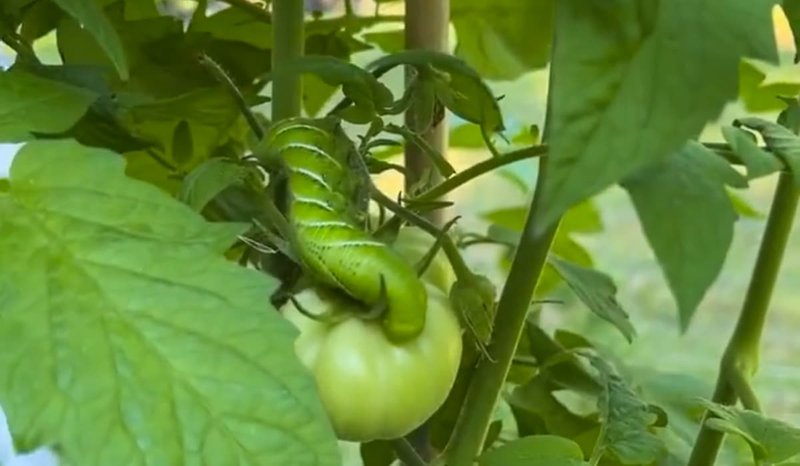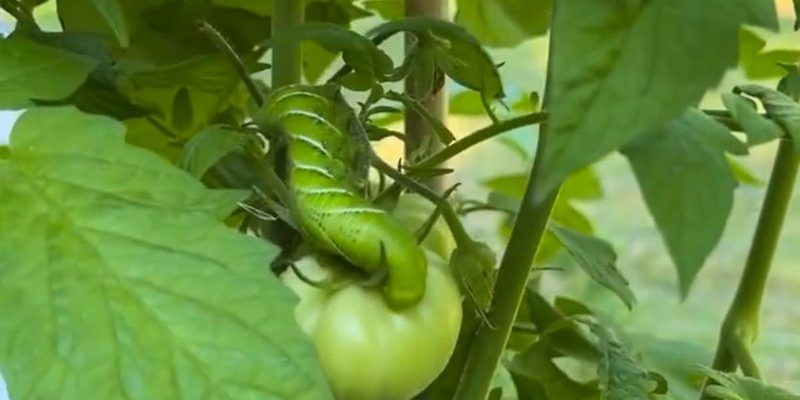
So, what exactly are hornworms, and why should you care about them while managing a hydroponic tomato system? Let’s break it down. Hydroponic systems are all the rage for growing tomatoes because they allow you to cultivate healthy plants without soil. But when you introduce pests like hornworms into the equation, things can get a bit tricky. In this article, we’ll explore hornworms, how they affect your hydroponic tomatoes, and what you can do to keep your plants healthy and thriving.
What Are Hornworms?
Hornworms are the larval stage of certain moths, mainly the *Manduca sexta* and *Manduca quinquemaculata*. These caterpillars are notorious for their vibrant green color and the horn-like projections on their rear ends. You can think of them as the teenage monsters of the garden—big, hungry, and surprisingly destructive. They can grow up to four inches long and can munch on your tomato leaves, stems, and even fruit overnight.
Why does this matter? Well, hornworms can quickly defoliate your plants if they go unnoticed. For instance, if you’re growing hydroponic tomatoes, one hornworm can devastate a young plant within a matter of days. So, spotting them early is crucial. If you see your tomatoes looking a bit sad or eaten away, check for these green guys hiding among the leaves.
How Do Hornworms Impact Hydroponic Tomatoes?
Hydroponic tomatoes are grown in nutrient-rich water solutions rather than soil, which gives them a unique edge for growth. However, this system also presents its own challenges when it comes to pests like hornworms. Since these plants are often indoors or in controlled environments, they may attract fewer pests overall. But when hornworms do show up, they can wreak havoc.
Here’s the thing: when a hornworm chomps on your hydroponic tomato leaves, it’s not just an aesthetic issue. These pests can stunt the growth of your plants and lead to fewer tomatoes. You might wonder how a few caterpillars can have such a significant effect. Well, the leaves are where the plant does a lot of its work—photosynthesis, nutrient absorption, all of that crucial stuff.
So, the bottom line? If you’re growing hydroponic tomatoes, it’s essential to keep an eye out for hornworms. You want to catch them early to minimize their impact on your plants.
Identifying Hornworms
Identifying hornworms can be easier than you might think. These caterpillars are often a bright green, allowing them to blend in with your tomato plants. But look closer, and you’ll notice their distinct features: the horn at the back, white diagonal stripes along their sides, and a plump, soft body.
You might be wondering, “How do I tell them apart from other caterpillars?” Great question! One way to distinguish hornworms from others is to look for their droppings. Hornworm droppings are dark green and large, almost like miniature rabbit droppings. If you see these little green pellets around your plants, it’s a strong sign that you’ve got hornworms lurking nearby.
Another simple method for spotting them is to check your plants at dusk or dawn when they’re most active. Shine a flashlight on the leaves, and you might just catch those little green munchers in action!
Preventing Hornworm Infestations
Prevention is your best weapon against hornworms. Just like you wouldn’t leave your snack unprotected during a movie night, you need to safeguard your hydroponic tomatoes. Here are some effective methods:
- Regular Inspections: Make it a habit to inspect your plants regularly. Look for signs of damage or the hornworms themselves. The earlier you can spot an infestation, the easier it is to manage.
- Beneficial Insects: Consider introducing beneficial insects like parasitic wasps, which lay their eggs in hornworms. The wasp larvae eventually consume the hornworm from the inside out, naturally controlling the population.
- Physical Barriers: Using row covers can protect your plants from adult moths that lay hornworm eggs. Just remember to take the covers off when your plants are flowering to allow for pollination.
- Healthy Plants: Keeping your tomatoes healthy with proper nutrients can make them more resilient to pests. A strong plant is less likely to succumb to an infestation.
Each of these strategies can help you maintain a hornworm-free hydroponic system.
What to Do If You Find Hornworms
If you’ve found hornworms on your hydroponic tomatoes, don’t panic! There are several steps you can take to get rid of them without resorting to harsh chemicals. Here’s what you can do:
1. **Manual Removal:** The most straightforward way is to handpick them off your plants. Wear gloves if you want, and simply place them in a bucket of soapy water to dispose of them.
2. **Natural Pesticides:** Consider using natural pesticides like neem oil or insecticidal soap, which are less harmful to your plants and beneficial insects. Spray them on the affected leaves per the instructions.
3. **Encourage Natural Predators:** As I mentioned earlier, attracting beneficial insects can help keep hornworm populations in check. Ladybugs and lacewings are also great allies in the fight against pests!
4. **Monitor and Repeat:** After you take these steps, keep monitoring your plants. Recheck for hornworms and monitor the health of your tomatoes. It’s all about staying proactive.
Navigating the challenges of hornworms and hydroponic tomato systems can feel daunting at first, but it’s totally manageable with the right approach. By understanding what hornworms are and how they can affect your plants, you can take steps to prevent and manage their presence effectively. Regular inspections, maintaining healthy plants, and utilizing natural controls can make all the difference.
Growing hydroponic tomatoes is a rewarding experience, and with a little diligence, you can keep those pesky hornworms at bay. So, take a deep breath, enjoy the process, and remember—you’ve got this! Happy gardening!

